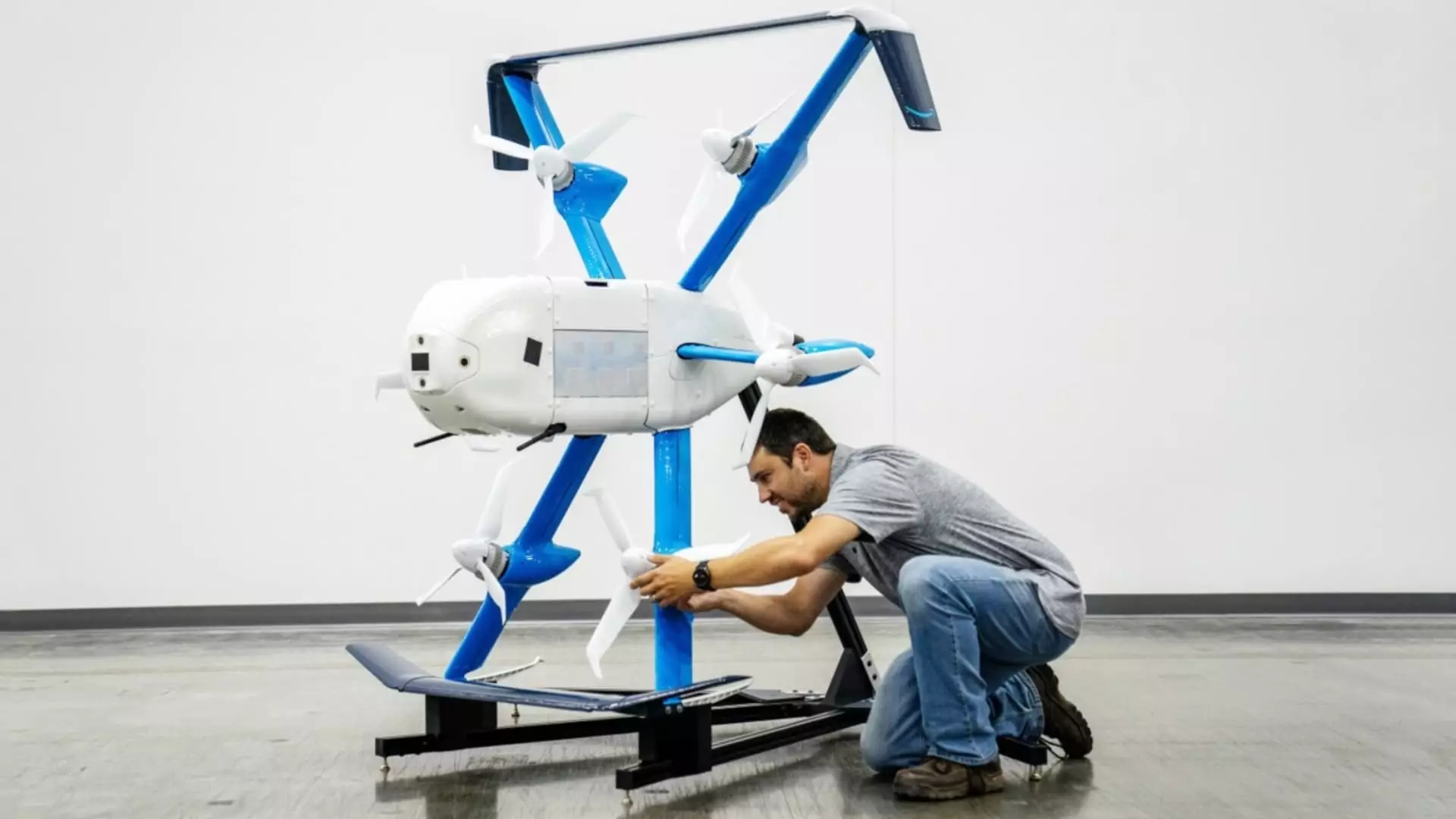Amazon has reached an exciting milestone in its ambitious journey towards revolutionizing delivery services with the approval of its new drone model, the MK30. This newly unveiled aerial vehicle represents a significant leap forward in the company’s drone delivery technology. Designed to operate under various weather conditions, including light rain, and boasting a flight range that doubles its predecessors, the MK30 is poised to enhance the efficiency of Amazon’s Prime Air program. This development is particularly crucial as it emphasizes Amazon’s commitment to finding innovative solutions to meet consumer demands for quick and reliable delivery.
The approval from the Federal Aviation Administration (FAA) plays a pivotal role in the implementation of the MK30. This approval not only allows Amazon to conduct deliveries beyond the visual line of sight of pilots but also expands the operational range of its drones. Such capability is essential for integrating drone technology into wider logistics networks, which is a critical aspect for Amazon as it seeks to innovate and improve its delivery services. However, it is worth noting that while the FAA has granted this crucial approval, the landscape of regulatory compliance remains complex and often time-consuming for tech companies entering this space.
Despite Amazon’s substantial investments and long-term vision for its drone delivery service, the Prime Air program has faced a multitude of challenges. Over the past decade, ambitions expressed by founder Jeff Bezos about launching this service within a five-year timeframe have not materialized as envisioned. Unforeseen regulatory hurdles, staffing changes, and operational setbacks have clouded the project’s trajectory. Suffering from missed deadlines, Amazon’s drone initiative has also encountered significant layoffs and executive turnover, which underscores the risk and uncertainty intrinsic to pioneering technology in a heavily regulated field.
The situation became particularly challenging when Amazon decided to close its testing site in Lockeford, California. This decision, coupled with difficulties in maintaining community support, illustrates the delicate balance between innovation and public perception. Residents in areas such as College Station, Texas, have reportedly raised concerns over noise pollution resulting from drone operations, prompting responses from local government officials and Amazon alike.
In light of numerous challenges, Amazon has begun to strategically reposition its operations. In particular, it secured approval to initiate drone deliveries near Phoenix, Arizona, targeting the city of Tolleson as a new focal point for its logistics activities. This demonstrates a proactive approach to integrate drone services within existing distribution frameworks, ultimately aiming to expedite delivery mechanisms. The reconfiguration of operations signifies an attempt to align drone technology with Amazon’s broader logistical goals, laying the groundwork for a more seamless integration of drone deliveries into everyday consumer experiences.
At the helm of the Prime Air program is David Carbon, a former Boeing executive brought in to drive the operation forward. His industry experience could provide valuable insights as Amazon navigates both technical challenges and regulatory landscapes. These strategic moves reflect an understanding that innovation is not merely about the technology itself but also about effective management and community engagement.
Competition in an Evolving Landscape
As Amazon continues to advance its drone delivery program, it faces stiff competition from other players in the industry. Rivals like Alphabet’s Wing, UPS, and Walmart, along with several innovative startups, are equally invested in leveraging drone technology for deliveries. This competitive environment underscores the importance of rapid development, customer trust, and regulatory navigation in achieving success.
Amazon’s MK30 is a crucial step toward realizing a future where drone deliveries are commonplace. While challenges abound, the company’s recent advancements demonstrate resilience and ingenuity. By actively working to overcome obstacles, Amazon may indeed redefine logistics and delivery in the near future, establishing itself at the forefront of this transformative movement. As the industry evolves, it will be essential for these companies to remain agile, innovative, and responsive to the communities they serve.

